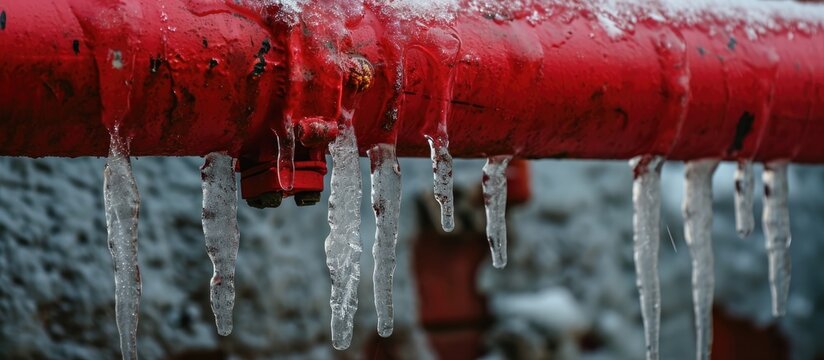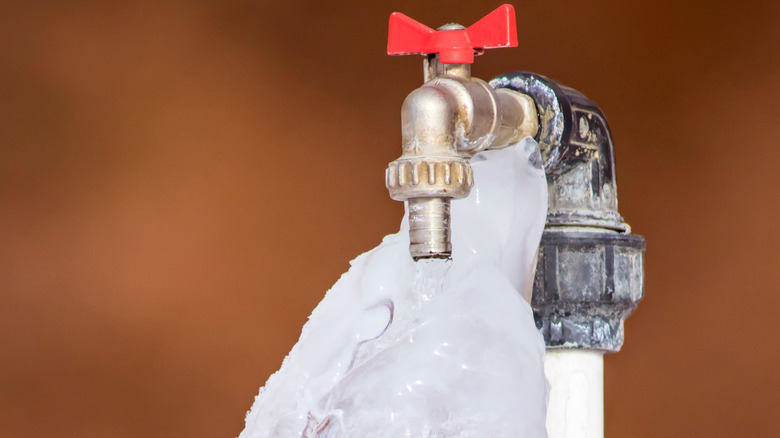Tips to Keep Pipes from Freezing Issues: Essential Guidance
Tips to Keep Pipes from Freezing Issues: Essential Guidance
Blog Article
This great article further down involving How To Avoid Freezing Pipes is exceptionally captivating. You should read it.

Winter can ruin your pipes, particularly by freezing pipelines. Here's exactly how to avoid it from happening and what to do if it does.
Introduction
As temperatures drop, the threat of icy pipelines boosts, possibly leading to costly repair work and water damage. Comprehending exactly how to prevent frozen pipelines is crucial for property owners in cold climates.
Avoidance Tips
Shielding prone pipes
Cover pipelines in insulation sleeves or utilize heat tape to shield them from freezing temperature levels. Focus on pipelines in unheated or outside locations of the home.
Home heating techniques
Maintain interior rooms sufficiently heated, specifically areas with pipes. Open up cupboard doors to permit warm air to distribute around pipes under sinks.
Exactly how to recognize frozen pipelines
Look for reduced water circulation from taps, unusual odors or noises from pipelines, and noticeable frost on revealed pipelines.
Long-Term Solutions
Structural adjustments
Take into consideration rerouting pipes far from outside walls or unheated locations. Add additional insulation to attic rooms, cellars, and crawl spaces.
Upgrading insulation
Purchase premium insulation for pipelines, attic rooms, and wall surfaces. Correct insulation assists preserve regular temperature levels and lowers the threat of icy pipes.
Securing Outdoor Pipes
Garden hoses and exterior faucets
Detach and drain pipes garden pipes before wintertime. Install frost-proof spigots or cover exterior faucets with protected caps.
Understanding Icy Pipelines
What causes pipes to ice up?
Pipelines freeze when exposed to temperatures listed below 32 ° F (0 ° C) for expanded periods. As water inside the pipes freezes, it broadens, putting pressure on the pipe walls and potentially triggering them to rupture.
Dangers and problems
Icy pipelines can bring about water supply disruptions, residential property damages, and costly repair services. Ruptured pipes can flood homes and trigger substantial structural damage.
Indicators of Frozen Pipeline
Identifying icy pipes early can prevent them from breaking.
What to Do If Your Pipes Freeze
Immediate activities to take
If you think icy pipes, maintain faucets open up to eliminate pressure as the ice melts. Use a hairdryer or towels soaked in warm water to thaw pipes gradually.
Conclusion
Stopping frozen pipes needs aggressive steps and quick actions. By comprehending the reasons, indications, and safety nets, homeowners can safeguard their plumbing throughout winter.
5 Ways to Prevent Frozen Pipes
Drain Outdoor Faucets and Disconnect Hoses
First, close the shut-off valve that controls the flow of water in the pipe to your outdoor faucet. Then, head outside to disconnect and drain your hose and open the outdoor faucet to allow the water to completely drain out of the line. Turn off the faucet when done. Finally, head back to the shut-off valve and drain the remaining water inside the pipe into a bucket or container. Additionally, if you have a home irrigation system, you should consider hiring an expert to clear the system of water each year.
Insulate Pipes
One of the best and most cost-effective methods for preventing frozen water pipes is to wrap your pipes with insulation. This is especially important for areas in your home that aren’t exposed to heat, such as an attic. We suggest using foam sleeves, which can typically be found at your local hardware store.
Keep Heat Running at 65
Your pipes are located inside your walls, and the temperature there is much colder than the rest of the house. To prevent your pipes from freezing, The Insurance Information Institute suggests that you keep your home heated to at least 65 degrees, even when traveling. You may want to invest in smart devices that can keep an eye on the temperature in your home while you’re away.
Leave Water Dripping
Moving water — even a small trickle — can prevent ice from forming inside your pipes. When freezing temps are imminent, start a drip of water from all faucets that serve exposed pipes. Leaving a few faucets running will also help relieve pressure inside the pipes and help prevent a rupture if the water inside freezes.
Open Cupboard Doors
Warm your kitchen and bathroom pipes by opening cupboards and vanities. You should also leave your interior doors ajar to help warm air circulate evenly throughout your home.

Hopefully you enjoyed reading our post on Prevent Frozen Pipes . Thank you for taking time to read our content. Kindly pause to share this blog post if you liked it. Thank you so much for taking the time to read it.
This Resource Report this page